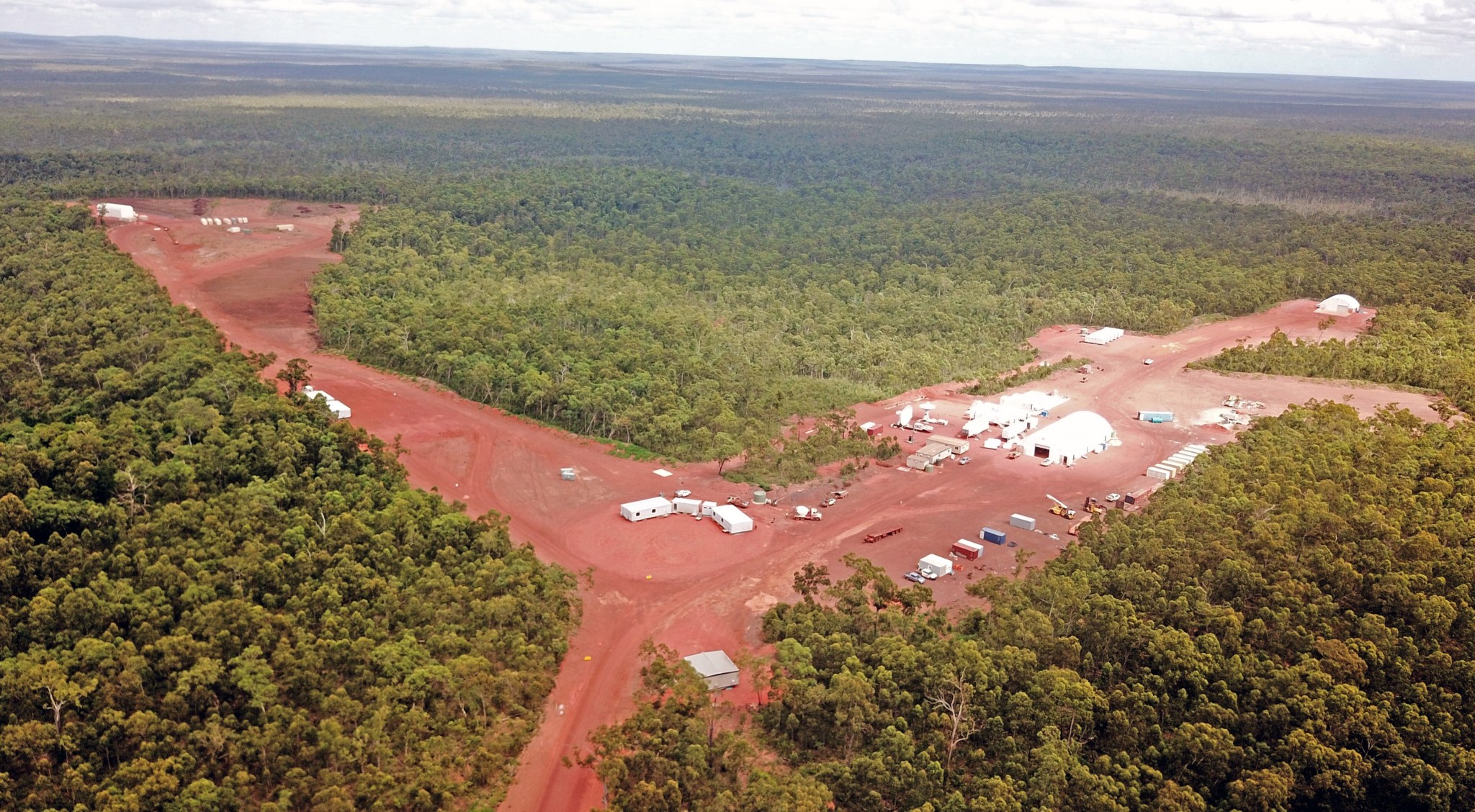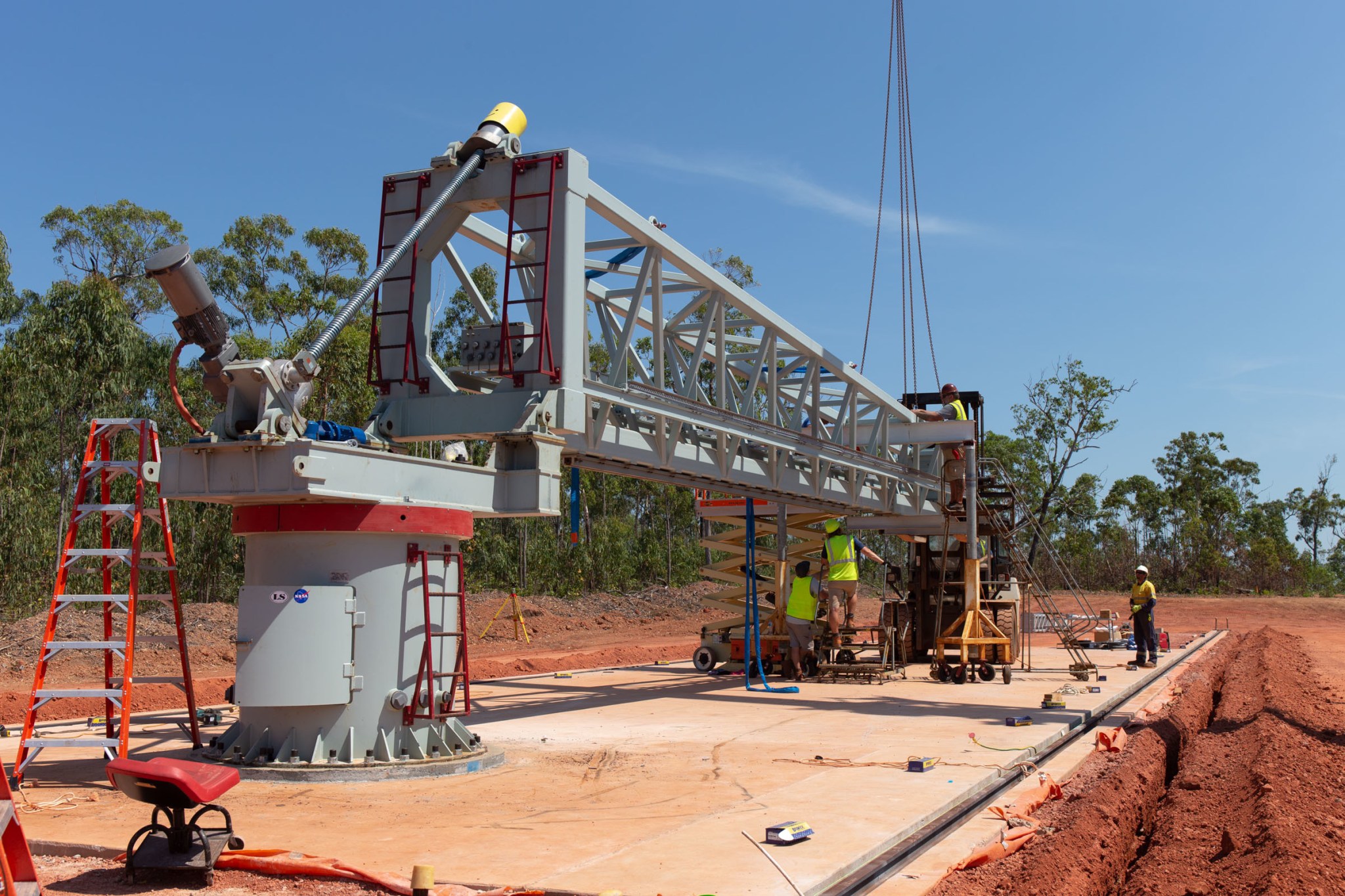NASA will launch three suborbital sounding rockets in June and July 2022 from Equatorial Launch Australia’s Arnhem Space Center in Australia’s Northern Territory to conduct astrophysics studies that can only be done from the Southern Hemisphere.
Two of the three missions will focus on Alpha Centauri A and B, two of the three-star Alpha Centauri system that are the closest stars to our Sun. The third will study X-rays emanating from the interstellar medium – the clouds of gases and particles in the space between stars.
“This commercial launch range in Australia opens up new access to the Southern Hemisphere’s night sky, expanding the possibilities for future science missions” said Thomas Zurbuchen, NASA associate administrator for the Science Mission Directorate.
“In addition to furthering our science goals, this science campaign builds on recent collaborative efforts with Australian organizations including the Artemis Accords, NASA’s Climate Absolute Radiance and Refractivity Observatory Pathfinder mission, and the development of a lunar rover that could launch as early as 2026.”
“We’re excited to be able to launch important science missions from the Southern Hemisphere and see targets that we can’t from the United States,” said Nicky Fox, director for NASA’s Heliophysics Division at NASA Headquarters in Washington, D.C. “The launches this summer will allow us to explore how a star’s light can influence a planet’s habitability among other things.”
“We know just how valuable this advancement is to the growth of the Australian space sector,” said Minister for Industry and Science Ed Husic. “Australia has a proud history of scientific endeavors and international collaboration with our allies like the United States. By backing Australia’s booming space sector, we’re backing a better future for all Australians and for industry. Space strengthens our economy – including in regional areas – and creates jobs across a diverse range of skillsets.”
The three sounding rocket night-time missions will be launched between June 26 and July 12 on two-stage Black Brant IX sounding rockets, from the Arnhem Space Center or ASC, which is owned and operated by Equatorial Launch Australia or ELA. The ASC is a commercial space launch facility, located on the Dhupuma Plateau near Nhulunbuy, on the lands of the Yolngu people, who are the Traditional Custodians and Landowners. The NASA missions will be the first launches from Arnhem.
“We are excited and proud that our Arnhem Space Centre will be the first spaceport in Australia to conduct a commercial space launch,” said Michael Jones, ELA Executive Chairman and Group CEO.
“We’ve been working hard since 2015 to build the ASC to make ELA the pre-eminent multi-user commercial space launch company in the world,” Jones said. “Having NASA as our first customer will allow us to prove the capabilities of ELA and the ASC as well as the benefits of launching near the equator. It will mean that over the next five years the ASC will ramp up to be capable of launching more than 100 launches a year,” he added.
This will be the first time NASA will undertake a launch from a commercial launch facility outside of the US. The campaign will also be the first NASA rocket launches from Australia since 1995, when launches were conducted from the Royal Australian Air Force Woomera Range Complex.
“This launch campaign has been several years in the making and we are pleased to see it coming to fruition. In September 2021, about 20 personnel from NASA’s Wallops Flight Facility in Virginia traveled to Arnhem to set up equipment to support this campaign,” said Scott Bissett, the NASA Sounding Rockets Program Australian campaign manager. “We have been overwhelmed with the support provided by ELA, the Australian Space Agency, the Northern Territory Government, the Northern Land Council, and the Nhulunbuy community. Their support has been essential in this effort,” Bisset said.
About 60 NASA personnel traveled from Wallops in late-May to support the campaign. An additional 15 science team members will begin arriving at Arnhem in early June.
“We have backed this project from its inception, and now we’re just a month away from seeing the launch of NASA’s first sounding rocket from the Arnhem Space Centre,” said The Chief Minister of the Northern Territory Government Natasha Fyles. “NASA is adding capacity and rocketing East Arnhem Land into the global spotlight for investors – and this will help grow our industry, create more jobs for locals and more opportunities for businesses to expand. “The project is a big win for the Northern Territory – it will be the first-ever launch by NASA science rockets at a commercial site outside of the USA.”
The first launch, targeted for June 26, will carry the X-ray Quantum Calorimeter, or XQC, from the University of Wisconsin, Madison. XQC will carry unique X-ray detectors, cooled to a frigid one-twentieth of a degree above absolute zero, to measure interstellar X-rays with unprecedented precision to better understand the interstellar medium and its influence on the structure and evolution of galaxies and stars.
The second mission is the Suborbital Imaging Spectrograph for Transition region Irradiance from Nearby Exoplanet host stars, or SISTINE, from the University of Colorado Boulder. Targeted for launch on July 4, SISTINE will study how ultraviolet light from stars affects the atmospheres of the planets around them, including the gases thought to be signs of life.
The third mission, targeted to launch on July 12, is the Dual-channel Extreme Ultraviolet Continuum Experiment, or DEUCE, also from the University of Colorado Boulder. DEUCE will measure a so-far unstudied part of their extreme ultraviolet light spectrum. These measurements are needed to model stars similar and smaller than our Sun, as well as understand their effects on planetary atmospheres.
Notes to editors:
- Media accreditation is required for attendance to ASC and access to ELA vision and images via an online portal, please register here: https://ela.space/media-eoi/
- NASA images and video are available at: https://svs.gsfc.nasa.gov/14164
UPDATE July 11, 2022
A NASA Black Brant IX suborbital sounding rocket was successfully launched at 7:01 a.m. EDT (8:31 p.m. ACST) July 11, 2022, from the Arnhem Space Center (ASC) in the Northern Territory of Australia. The launch was for the Dual-channel Extreme Ultraviolet Continuum Experiment, or DEUCE, for the University of Colorado, Boulder. Preliminary analysis shows that good data was received by the science instrument during the flight.
The rocket carried the science instrument to an altitude of 162 miles (262 km) before descending by parachute and landing southwest of the launch site. Recovery operations of the science instrument and the rocket motors are in progress.
The DEUCE was the third of three NASA space science missions scheduled from ASC during the three-week period. The X-ray Quantum Calorimeter, or XQC, experiment from the University of Wisconsin was successfully launched on June 26 and the Suborbital Imaging Spectrograph for Transition region Irradiance from Nearby Exoplanet, or SISTINE mission, from the University of Colorado, Boulder, was conducted on July 6.
UPDATE July 6, 2022
A NASA Black Brant IX suborbital sounding rocket was successfully launched at 9:47 a.m. EDT (11:17 p.m. ACST) July 6, 2022, from the Arnhem Space Center (ASC) in the Northern Territory of Australia. The launch was for the Suborbital Imaging Spectrograph for Transition region Irradiance from Nearby Exoplanet host stars, or SISTINE, mission for the University of Colorado, Boulder. Preliminary analysis shows that good data was received by the science instrument during the flight.
The rocket carried the science instrument to an altitude of 151miles (243 km) before descending by parachute and landing southwest of the launch site. Recovery operations of the science instrument and the rocket motors are in progress.
The SISTINE was the second of three NASA space science missions scheduled from ASC. The X-ray Quantum Calorimeter, or XQC, experiment from the University of Wisconsin was successfully launched on June 26. The next launch, carrying the Dual-channel Extreme Ultraviolet Continuum Experiment, or DEUCE, is scheduled for 6:57 a.m. EDT (8:27 p.m. ACST), July 12, 2022.
UPDATE June 26, 2022
A NASA Black Brant IX suborbital sounding rocket was successfully launched at 10:29 a.m. EDT (11:59 ACST) June 26, 2022, from the Arnhem Space Center (ASC) in the Northern Territory of Australia. The rocket carried the X-ray Quantum Calorimeter, or XQC, experiment from the University of Wisconsin. Preliminary analysis shows that good data was received by the science instrument during the flight.
The rocket carried the science instrument to an altitude of 203 miles before descending by parachute and landing southwest of the launch site. Recovery operations of the science instrument and the rocket motors are in progress.
The XQC was the first of three space science missions scheduled from ASC. The next launch is scheduled for 6:54 a.m. EDT (8:24 p.m. ACST), July 4, 2022.
Keith Koehler
NASA’s Wallops Flight Facility, Virginia
Sarah Thomas
Equatorial Launch Australia




























